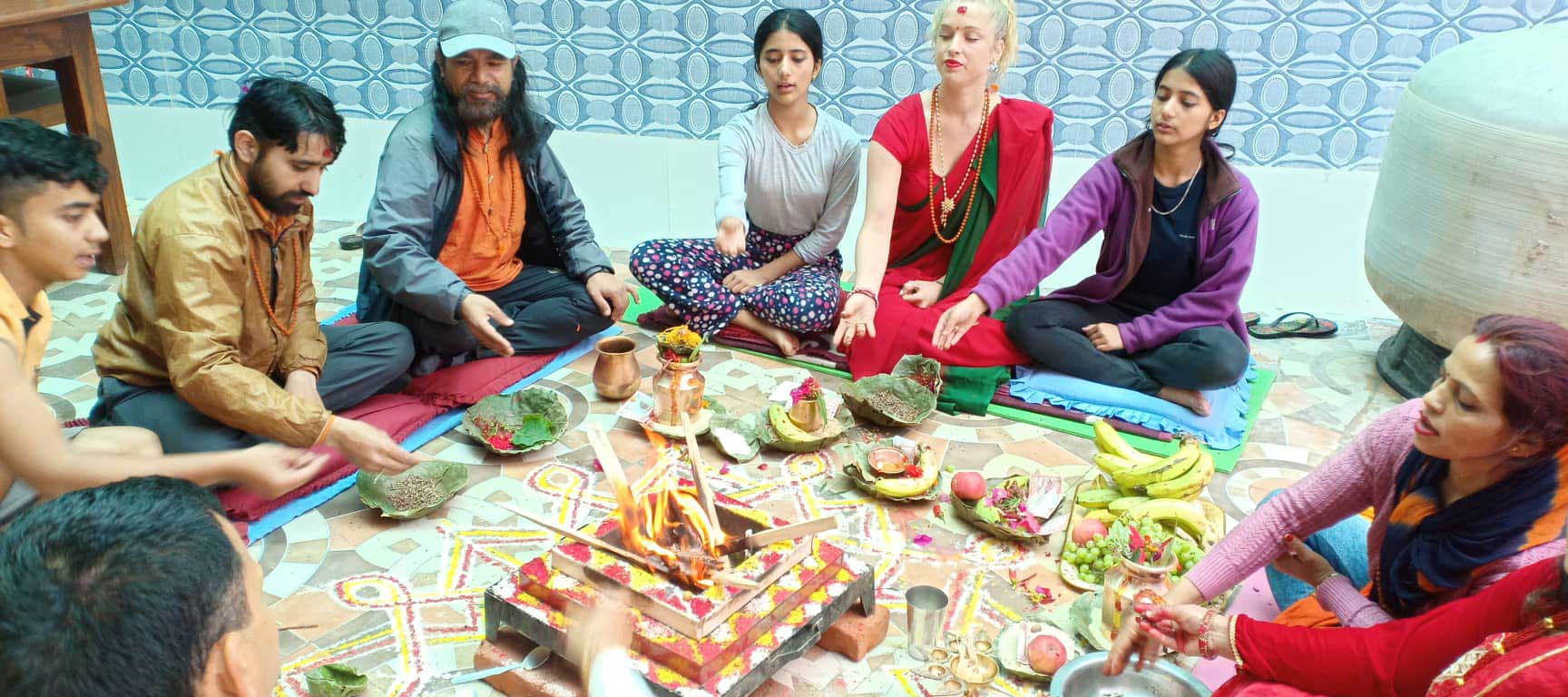
17 Aug 2019 HYN Himalayan Yoga Academy
Introduction: Foundations for Yoga Teacher Training Course in HYA
Yogah, a Sanskrit word is a state of no mind level. “Yoga is gaining popularity in all parts of the world but the understanding levels of the public is different. It is considered a modern physical exercise, and even Yoga practitioners and Instructors misunderstand the truth. Yoga is not done but is achieved after dedicated practice regularly.
Yoga normally represents different means or techniques, known as yogic kriyas. Yoga is saadya, achieved from sadhana (Spiritual Practice) of Saadhaka (Practitioner). Saadhaka uses sadhana (Means) for union or harmony which is one level of the goal of the yogic journey. On the yogic level, it is the boon of sickness. It is the fashion of the day for fitness for common people. A restless mind converts into solace. It is the intelligence project for memory, creativity, and consciousness for some levels of people. It is the spiritual sadhana for yoga or Samadhi.
Objectives of the Yoga Course :
Understanding of Yoga
Definitions of Yoga
Application of Yoga
The Root of Yoga:
The term Yogah has its verbal root is ‘Yuj’ in Sanskrit. Yuj means to join. Yujyate anena iti yogah”. Yoga is that which joins more than two issues, two energies, and two existences for oneness. In the spiritual sense, it is the joining of Jivatma (Lower self/ individual self) and Paramatma (Higher self /Universal self). It is an expansion of the narrow constricted egoistic personality to an all-pervasive, eternal, and blissful state of truth.
Paatajala Yoga Darshana is one among the six systems of Eastern philosophy known as Shatadarshanas. One of the great Rishis/ Seer named Patanjali compiled the essential features and principles of yoga in the form of sutras (aphorisms) and made a great contribution to the field of Yoga and spiritualism. According to Patanjali, Yoga is the union of conscious processes of gaining mastery over the mind.
The first reference sacred text of Yoga is Rig Veda which is the first sacred text of the World. Bhagavad Geeta and Upanishads portrayed the scope of yoga as a more comprehensive approach. Generally, there is a growth process due to interactions with nature in all creations. Man, endowed with discrimination power, conscious thinking faculty, the mind, wisdom, and well-developed voluntary control systems, aspires to accelerate his growth in his entirety. Yoga is that systematic conscious process that can compress the process of man’s growth greatly.
Definitions: Foundations for Yoga Teacher Training Course
The only authentic and common definition in Yoga Darshana by Patanjali is “Yogashchittavrittinirodhah”, and the cessation of mind fluctuations in chitta is Yoga. The easy way to understand yoga is a state of processing of gaining control over the mind. By so controlling the mind we reach our original state and then the seers establish themselves in their causal state. These are the techniques of mind control prescribed by Maharshi Patanjali.
In action, Yoga is a special skill that makes the mind deepen its subtler state: “Yogah Karmashu Kaushalam” –B.G.-2.50.Yoga is the dexterity in action. The dexterity is in maintaining the process of body and mind relaxation and awareness in action. Efficiency in action is its outcome. Yoga is a skillful science of gaining mastery over the mind.
Application of Yoga:
Yoga is a completely experimental science, but not a physical approach. Physically just 10% is a practical approach and the rest ethical, literal and entirety experiment and also acknowledging experiment, self-realizing process, etc.
The traditional paths for Yoga experiments are Hatha yoga, Mantra Yoga, Laya Yoga, and Raja Yoga; similarly Karma Yoga, Bhakti Yoga, Jnana Yoga, and Dhyana Yoga. Ashtanga and Kundalini are their modified and integrated versions. Ultimately Ashtanga is itself the totality of Yoga; it is not one path or type of yoga.
Various Highlights of the Yoga teacher training in Nepal :
- Alignment correction
- Prayer as chants in Bhakti yoga, ethical ways of yoga
- Warm-up exercise
- Stretching phase
- Postures,
- Bandhas as physical discipline
- Pranayamas, Mudras
- Yoga Nidra, for ethical mind as a bridge to enter
- Meditation as Dhyana yoga with hundreds of techniques
